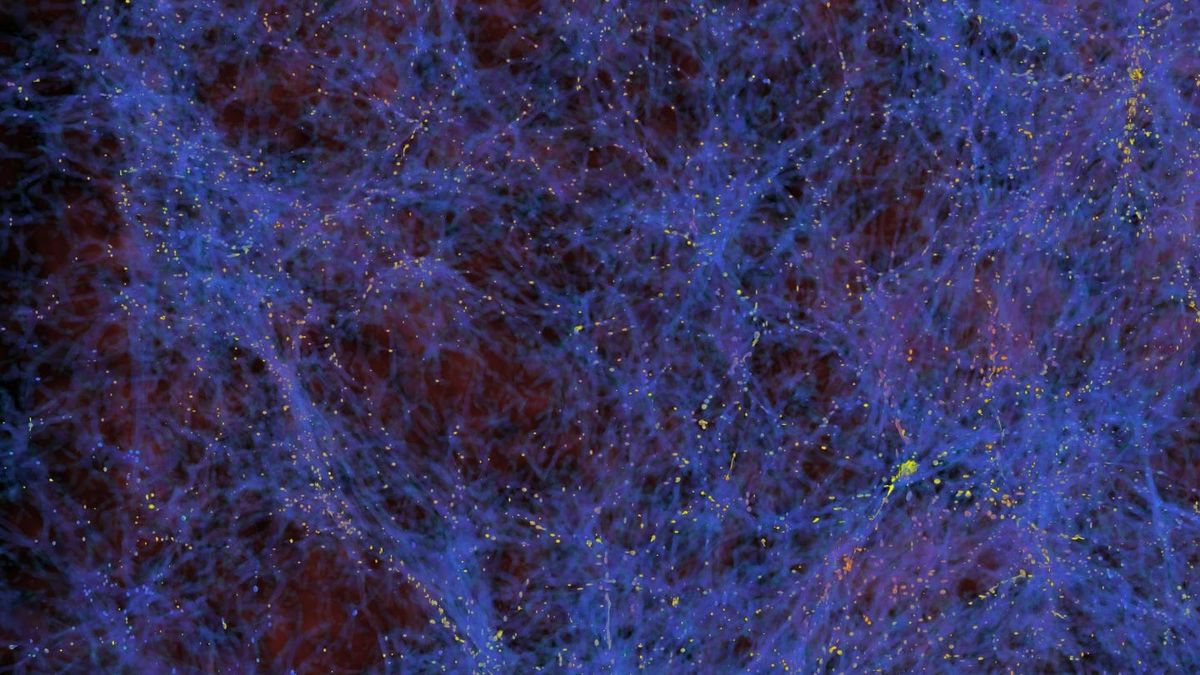The hidden nature of our Universe - Dark Matter & Dark Energy

👋 Hey Friends,
have you ever thought about the deep unknown secrets of our universe? As many of us, you certainly did. One of these long-hidden and mysterious problems is the rotation speed of galaxies which we shall today explore and see that it leads us to something way more fundamental about our universe, Dark Matter and Dark Energy.
👩🚀 The origin of the idea of dark matter
The rotating speed of galaxies within our universe has been an unsolved mystery for many past centuries because they are rotating with such speed that the gravity generated by their observable matter, so everything we know from the Standard Model, could not possibly hold the galaxies together. Instead, they should have torn themselves apart long ago if we follow the rules from general relativity and classical mechanics.
The same effect can be seen within galaxy clusters, which lets scientists believe that there is something at work that we cannot see. The general scientific consensus now proposes that something we have yet to detect directly is giving these galaxies extra mass, generating the extra gravity needed to keep them intact. Since Fritz Zwicky’s discovery of this mystery attribute of our universe in 1933 we call it “dark matter” since its “invisibility”.
🌌 Dark Matter
Unlike ordinary matter, dark matter does not interact with electromagnetic force. This means it does not absorb, reflect or emit light in any sensible way which makes it extremely hard to spot due to its “invisibility”. In fact, the existence of dark matter has only been inferred due to its strong gravitational effect compared to visible matter.
Measurements confirmed that dark matter prevails over ordinary matter roughly six to one, making up about 27% of the universe. A sobering fact about our universe is that the matter we know and that makes up all stars, galaxies, planets and even life only accounts for about 5% of the content of our universe! When answering the question of what dark matter now is theoretical and experimental physicists propose that dark matter contains "supersymmetric particles" - hypothesized particles that are partners to those already known in the Standard Model.
But how can we try to detect those mythical particles? Theoretically, the particles of dark matter are light enough to be produced at the Large Hadron Collider (LHC). The problem is that if we would create those particles they would escape through the detectors unnoticed due to their indescribably small mass. However, they would carry away energy and momentum, so physicists could infer their existence from the amount of energy and momentum “missing” after a collision.
Candidates of dark matter arise frequently in theories that suggest physics beyond the Standard Model, such as supersymmetry and extra dimensions. If one of these theories proves to be correct, it would help scientists gain a better understanding of the composition of our universe and, in particular, how galaxies hold themselves together.
⚡️ Dark Energy
The mystery energy within our universe, known as dark energy, makes up approximately 68% of the universe and appears to be associated with the vacuum in space. It is evenly distributed throughout the entire universe, not only in space but also in time. This means that the effect is not diluted as the universe expands. Compared to ordinary energy dark energy does not have any local gravitational effect but rather a global effect on the universe as a whole.
This even distribution leads to a repulsive force which tends to accelerate the expansion of the universe. The expansion rate of the universe is measurable by the observations based on the Hubble law. Combined with other scientific data we have confirmed the existence of dark energy and scientists also provide an estimate of just how much of this mysterious substance exists.
Conclusion
As seen the universe holds many mysteries beyond the Standard Model and the theory of general relativity. It is composed of mystery substances, forces and matters that mankind still has to explore in order to answer the question of how our universe works. If you don’t want to miss the latest findings of our universe consider subscribing and sharing this newsletter. I thank you a lot for reading and I wish you a great rest Sunday with THE SUNDAY NIGHT SKY.
If you have enjoyed this episode of THE SUNDAY NIGHT SKY and you don't want to miss out on any future episodes consider subscribing for FREE.
Thanks again and I'll see you soon.
xoxo
Victor 👋 :) (@observethecosmos)
🎥 Youtube Video
Beyond Polynomials, a deep dive into NEWTON's Method
✍️ Quote of the week
“Time cannot put anything in your hands until you let go off the time.”
-Vishwanath S J
🎟 Want to advertise on The Sunday Night Sky? → Send an E-Mail
Check out some of my social media pages to learn more about math, science and astronomy:
🎬:Youtube
🐦:Twitter